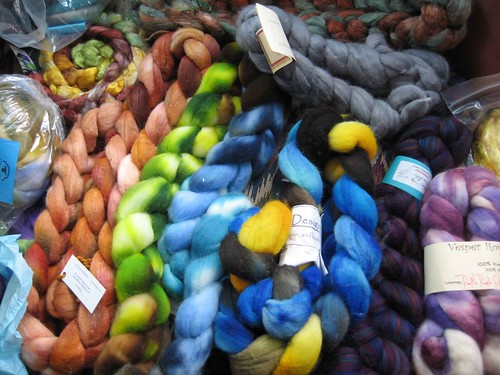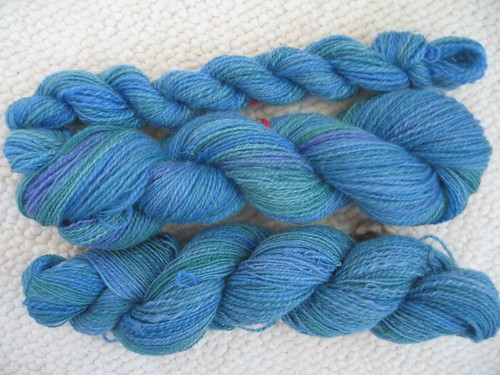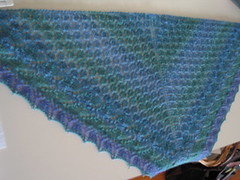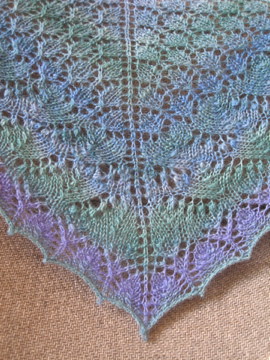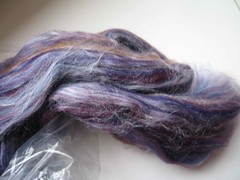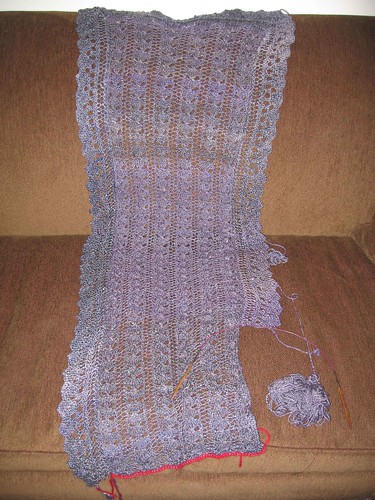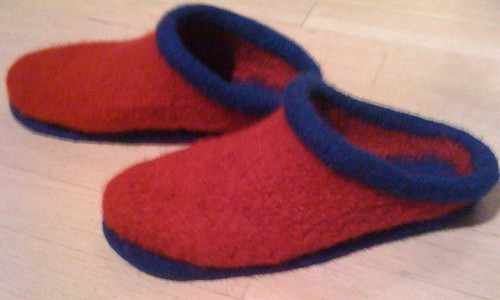
This summer I bought some plain-Jane grey fingering-weight yarn so I could make myself a pair of socks from Cat Bordhi's much-praised New Pathways for Sock Knitters.
The first one fit OK. But it was, like most socks I make, a little loose. So I took a daring step. I made the second one in the next size smaller.
It felt like heresy. After all, everything is supposed to match. But I reasoned that I would never know if the smaller size fit me better unless I tried, and I could always rip out the one that didn't fit.
Lo and behold, the smaller size fit much better. The discovery was liberating. It cast all of those slightly baggy handknit socks in a new light. Maybe my feet aren't as big as I think? Maybe I like a snugger sock than most patterns allow for?
But it was also liberating in that I had no desire to rip out the bigger sock. I had knit a lot of nice memories into that sock (starting with the yarn, which I bought at this wonderful store).
And this in turn freed me from the obligation to have everything match. I have long tried to reconcile my basically improvisatory nature with my anal-knitter side: the side we all need if we are going to get, say, the two fronts of a cardigan to match. I thought the anal knitter was somehow good for me. Well, this just in: my inner anal knitter has left the building.
Take the next thing I knit: these felted clogs. I made a mistake knitting the first one. As a result, the foot opening is bigger than it's supposed to be. Came time to knit the second one. Should I duplicate the mistake? Or should I rip back the first one and fix it?
My new persona, Deliciously Bad Knitter, did neither. I knit the second one "right" to see which one I liked better.
Deliciously Bad Knitter (DBK) not only relishes the sense of transgression this involves. She is learning more. More about sizes. More about preferences. More about experimentation. I kind of like the clog I knit "wrong," which is easier to slip on and off. Does it bother me that the two clogs are slightly different? Not a bit.
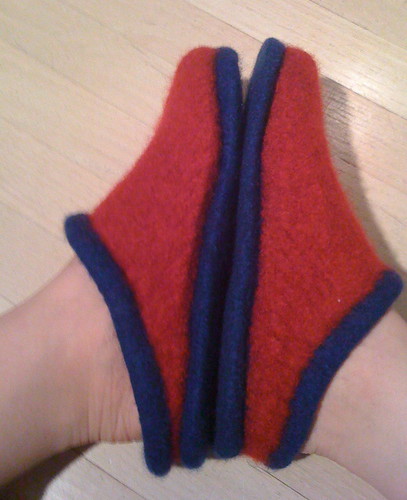
There's no stopping me now. DBK is actually an antidote to the very anal-knitter, or anal-spinner, side of me that spun several hundred yards of merino fiber into fingering-weight wool on a hand spindle this summer, improvising a Lazy Kate with two dowels stuck through a laundry basket, much to the wonderment of my parents, who were on vacation with us for a week.
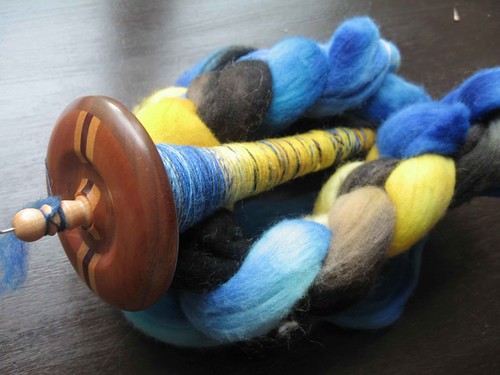
After finishing up that lot (I didn't think to snap a picture of the laundry basket, probably because my hands were otherwise occupied, I had this.
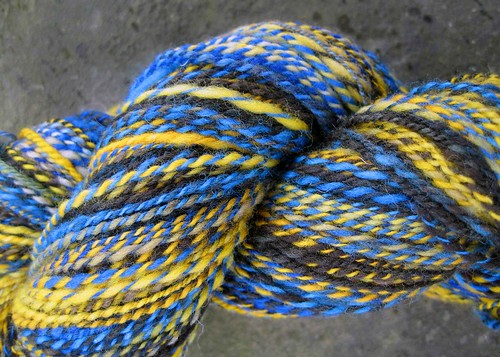
At which point DBK took over. It wasn't really deliberate. It was karma.

Now, these socks are pretty much the same size. Followed the same pattern (Tibetan socks, "Coriolis" architecture, from Cat Bordhi's book; not that you can see much of the patterning detail with this yarn). But symmetry?
I call them "Night and Day," because the colors evoke another unequal pairing: two things that always go together, but that don't, technically, "match."

But they are my all-time favorite knitted socks. So far.





